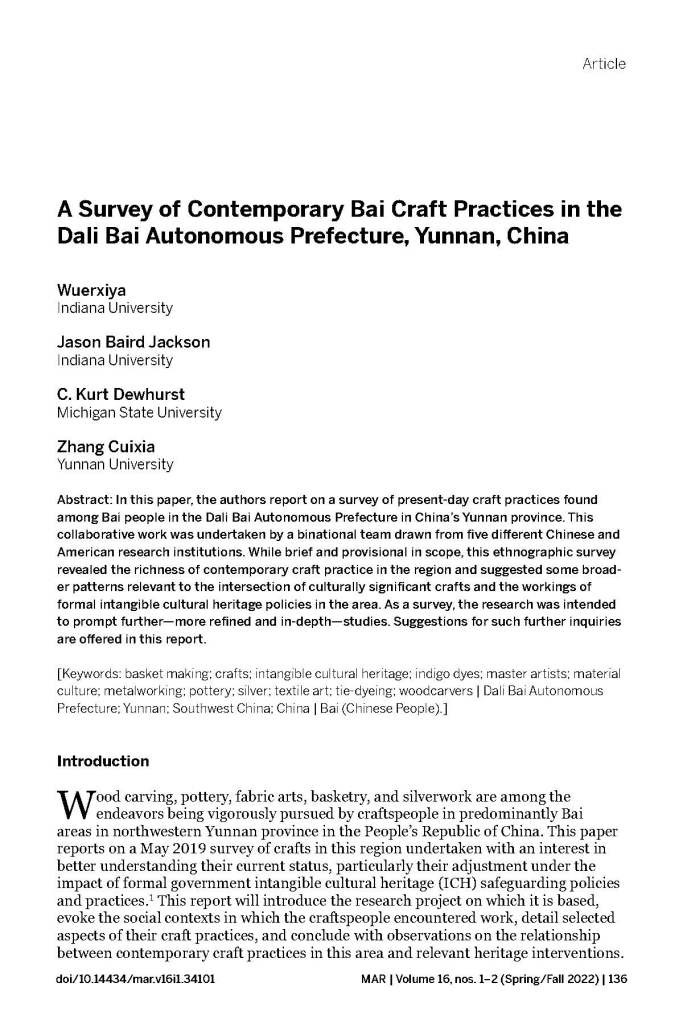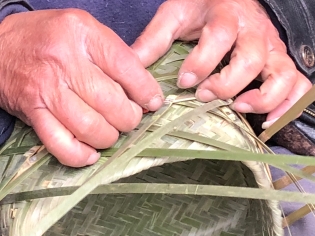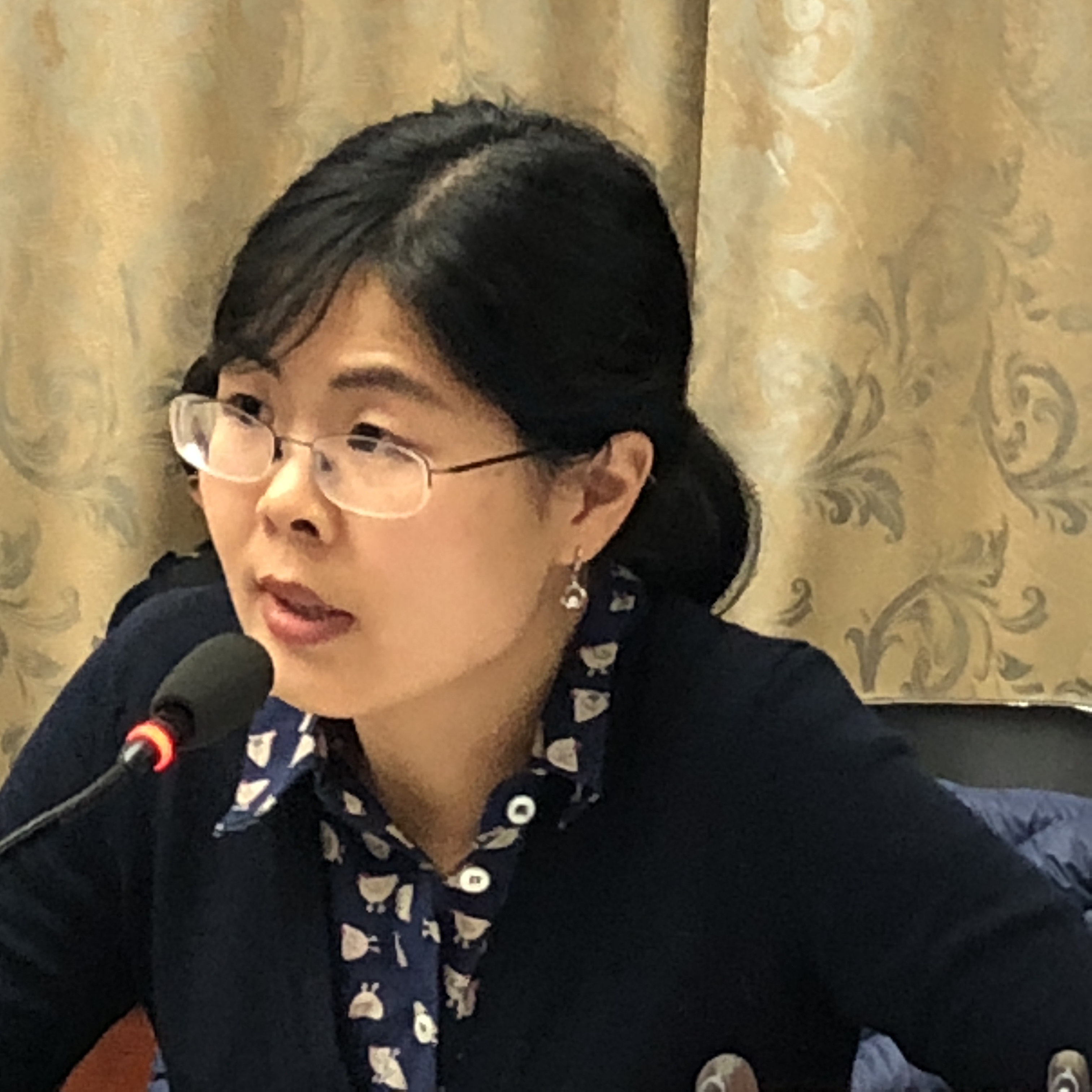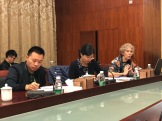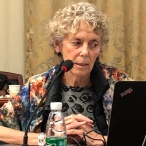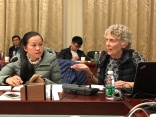Skip ahead six paragraphs (bypass those marked with an hash mark #) if you want to go straight to the start of the fieldwork stories. If you would like to know why my colleagues and I were in China doing fieldwork, start here at the beginning. (After this post, I will do one or two more with some fieldwork highlights.)

Manjiang village, a community within the Nandan Baiku Yao Ecomuseum. December 14, 2017. Photograph by Jason Baird Jackson.
# The China-US Folklore and Intangible Cultural Heritage Project is a binational collaboration linking the China Folklore Society and the American Folklore Society. It has been underway formally since 2007 and has included multiple project phases and, in these phases, various sub-projects. A wide range of funders have supported the project and its work and a great number of Chinese and American scholars and practitioners have participated in its activities. Among U.S. participants, special attention is often given to the Henry Luce Foundation, which has been particularly generous in supporting several phases of the project (Lloyd 2017).
# Two sub-projects occurring in two different phases of the project have a specific museum focus. Between 2013 and 2016, a sub-project titled “Intangible Cultural Heritage and Ethnographic Museum Practice” brought together six museums of ethnography—three from the United States and three from Southwest China. These museum partners organized two “Forum on China-US Folklore and Intangible Cultural Heritage” events, pursued professional exchanges of staff members, traveled together to visit local communities in the home regions of each museum, and undertook a joint exhibition and catalogue project. The resulting exhibition—Quilts of Southwest China has been touring the United States. The bilingual catalogue is distributed in the United States by Indiana University Press. These are just the formal highlights of the project. A wide range of spin-off projects and collaborative relationships also arose from this joint work (Dewhurst 2017; Du 2017; Indiana University 2013; Lloyd 2017; MacDowell 2017; MacDowell and Zhang 2016; Zhang 2017).
# A new phase of the larger project began in 2017 and it also includes a museum-focused sub-project. The new project builds on relationships and experiences arising in the preceding effort. Between 2017 and 2019, the “Collaborative Work in Museum Folklore and Heritage Studies” sub-project is bringing together researchers from the three U.S. museums (Mathers Museum of World Cultures, Michigan State University Museum, Museum of International Folk Art) with colleagues affiliated with the Anthropological Museum of Guangxi (AMGX), as well as that museum’s partners in two local ecomuseums: the Nandan Baiku (White Trousers) Yao Ecomuseum and the Sanjiang Dong Ecomuseum.
# The workshop (discussed in posts 6 and 7) was another formal part of the project, but the most crucial activity is ethnographic fieldwork in two communities—those associated with the two ecomuseums in Nandan and Sanjiang counties in Northern Guangxi. The December 2017 trip was for the first of four fieldwork efforts. On this trip, our local hosts and partners were the staff at the Nandan Baiku Yao Ecomuseum.

A pet bird in a basketry cage in Huaili village. December 14, 2017. Photograph by Jason Baird Jackson.
# In a Chinese context, an ecomuseum is a local museum framework that encompasses a community or group of communities, often associated with a single ethnic group or “nationality.” In Nandan County, the Nandan Baiku Yao Ecomuseum is embraces three contiguous villages near the town of Lihu. These three villages are situated within a wider area where “White Trouser Yao” people reside. White Trouser Yao is a designation for a particular group of Yao people distinguished by the white knicker-style pants worn as part of local men’s dress. Ecomuseums are somewhat hard to explain in a North American context because they are not limited to a fixed museum building (although they often include gallery spaces and other buildings used for museum functions). In formal terms at least, an ecomuseum is a way of characterizing an entire community or group of communities. The ecomuseum framework then becomes a organizational strategy for cultural heritage activities, including documentary work, cultural preservation activities, and perhaps also cultural tourism. The closest analog in the U.S. would be the situation found in some Native American communities where a “tribal museum” may have a museum building but may also facilitate a range of cultural preservation activities throughout the community. Wikipedia characterizes ecomuseums as follows:
An ecomuseum is a museum focused on the identity of a place, largely based on local participation and aiming to enhance the welfare and development of local communities. Ecomuseums originated in France, the concept being developed by Georges Henri Rivière and Hugues de Varine, who coined the term ‘ecomusée’ in 1971.[1] The term “éco” is a shortened form for “écologie”, but it refers especially to a new idea of holistic interpretation of cultural heritage, in opposition to the focus on specific items and objects, performed by traditional museums.
The nature and potential of ecomuseums is a key research concern of our partners at the Anthropological Museum of Guangxi (more on that later).
In a few final post or two, I will offer some highlights of our fieldwork experience. Here I explain our topic and circumstances.
While in Nandan County, the project participants stayed in rooms connected to the offices of the Nandan Baiku Yao Ecomuseum. This offered our group the opportunity to reside in the village cluster where the museum is centered without necessitating staying spread among various host families. The simple guest rooms at the museum were created with this sort of visiting research use in mind. The arrangement meant that visitors and locals could interact meaningfully from early in the morning to late in the evening without being a burden to local families nor introducing the disruption and social separation that would have accompanied staying in a hotel distant from the communities at the center of the research. He Jinxiu, a Baiku Yao woman who is active in the work of the museum, a civic leader in the community, and a noted textile artist, was engaged to cook for the visitors with the help of a younger woman in her family and another younger woman Li Xiuying who is also a noted local textile artist. This arrangement was very appropriate to local norms and was generously arranged for by the local museum staff and supported by the AMGX. I know that the other American participants join me in expressing deep appreciation for the generous hospitality extended to us by all of our partners in the project and by the members of the contiguous villages of Huatu, Manjiang, and Huaili in which the ethnographic investigations were undertaken.
Over the course of the research visit, the participants broke into three teams. Two of these teams focused on the nexus of textile arts and cultural heritage practices that are at the center of the project. These two research teams were made up of researchers from the American museums, from the AMGX, and from the Baiku Yao ecomuseum. Work by these teams was pursued in a mixture of English, provincial Mandarin, and the local Baiku Yao language.
One of these two teams focused on fabric arts; the other focused on bamboo basketry and the related practice of incorporating woven bamboo into architectural structures such as wall screens, fences, and basketry-walled granaries. The fabric arts group documented weaving practices, indigo dying, embroidery, the making and use of clothing, and silk production. The basketry group was able to document the making of an elaborate basket from start to finish (in photographs, video, notes, interviews), inventory baskets found in two households, and document over fifty basketry types in active use. This group also interviewed a basket trader, recording the full range of types in his inventory with names, prices, uses, and other data.

Bamboo harvested and stored for use in basket making at the home of Li Guicai in Huaili village. December 14, 2017. Photograph by Jason Baird Jackson.
The third project team, comprised of members of the AMGX staff with assistance from the Baiku Yao ecomuseum staff focused on documenting the work of the project as a whole, with the goal of being in a position to produce articles and documentary video chronicling the work of the international partnership. The three American museums also each made collections during the course of this work.
Much was learned and many questions for future research have been identified. The research concluded with travel to Nanning and, for the Americans, home to the US beginning on the 18th. In final post(s) I will share a richer glimpse of Baiku Yao cultural life and the people whom we we met.

Jon Kay (R) and Li Guicai (L) at Mr. Li’s home in Huaili village. December 14, 2017. Photograph by Jason Baird Jackson.
References Cited
Dewhurst, C. Kurt. 2017. “Building Connectivity: China-US Folklife Collaborations.” In Metafolklore: Stories of Sino-US Folkloristic Communication, edited by Juwen Zhang and Junhua Song, 189-98. Guangzhou: Sun Yat-sen University Press.
Du, Yunhong. 2017. “Ten Years: China-US Museum Collaborations in Retrospect.” In Metafolklore: Stories of Sino-US Folkloristic Communication, edited by Juwen Zhang and Junhua Song, 214-18. Guangzhou: Sun Yat-sen University Press.
Indiana University. 2013. “IU’s Mathers Museum One of Three U.S. Institutions to Collaborate with Chinese Museums.” Accessed January 16. 2018. http://archive.news.indiana.edu/releases/iu/2013/11/mathers-museum-collaboration.shtml
Lloyd, Tim. 2017. “The Inside Story of the AFS China-US Project.” AFS News. June 12, 2017. http://www.afsnet.org/news/349609/The-Inside-Story-of-the-AFS-China-US-Project.htm
MacDowell, Marsha. 2017. “Reflections on Collaborations: The Quilts of Southwest China Project.” In Metafolklore: Stories of Sino-US Folkloristic Communication, edited by Juwen Zhang and Junhua Song, 199-207. Guangzhou: Sun Yat-sen University Press.
——— and Lijun Zhang, eds.The Quilts of Southwest China. Nanning: Guangxi Museum of Nationalities and Bloomington: Indiana University Press.
Xie, Mohua. 2017. “My Two Stories.” In Metafolklore: Stories of Sino-US Folkloristic Communication, edited by Juwen Zhang and Junhua Song, 208-13. Guangzhou: Sun Yat-sen University Press.
Zhang, Lijun. 2017. “My Involvement in the Museum Exchange Projects.” In Metafolklore: Stories of Sino-US Folkloristic Communication, edited by Juwen Zhang and Junhua Song, 221-27. Guangzhou: Sun Yat-sen University Press.
